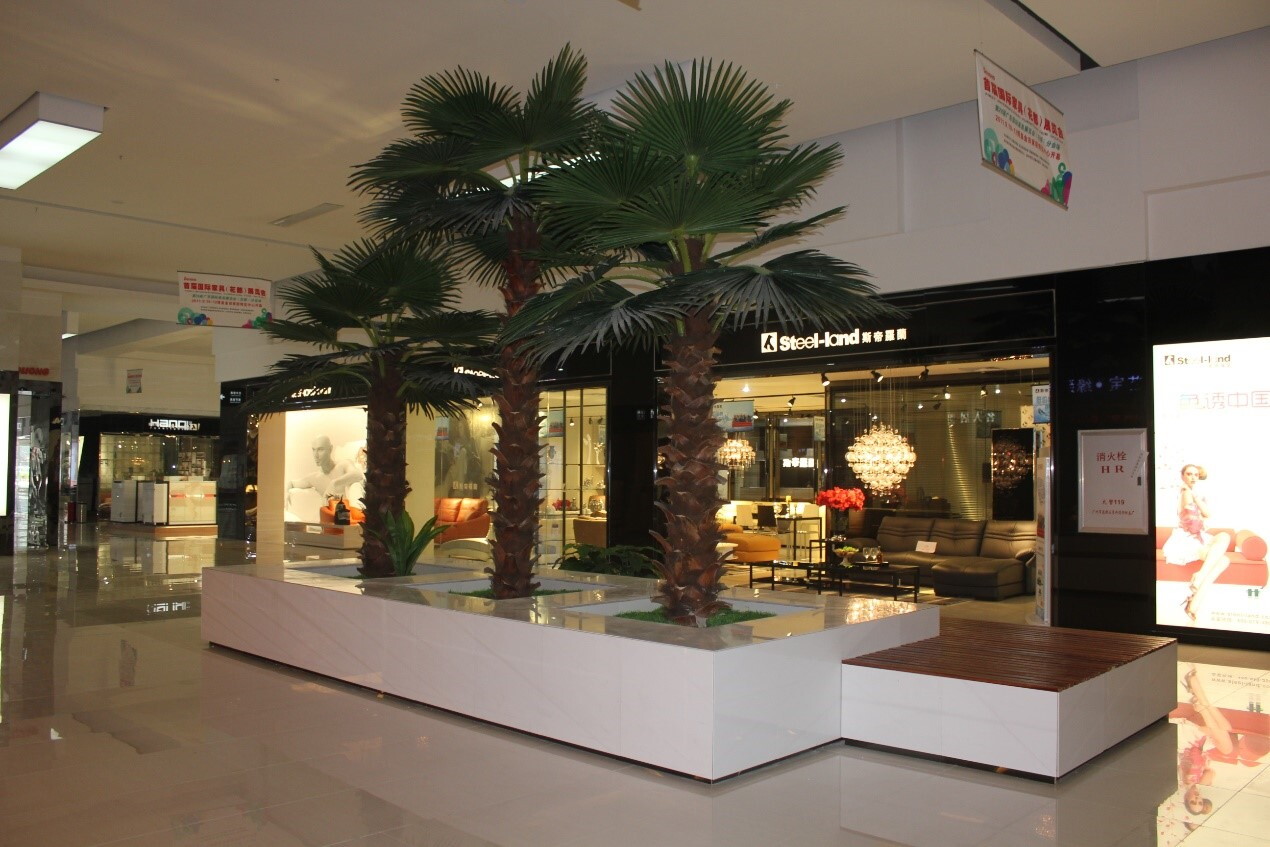Artificial trees are decorations that utilize modern technology and new materials to process and imitate the appearance of natural trees, aiming to present the most authentic effects of natural trees in specific settings.
Broadly speaking, artificial trees are essentially works of art, with a wide range of development in the market. They are highly controlled and altered in appearance, placement, and decoration. When applied in real life, individuals can freely design and decorate them according to the actual environmental conditions, avoiding the constraints of natural factors such as climate, moisture, and sunlight on real trees, thereby bringing about special aesthetic effects in decoration and landscaping.

The main characteristics of artificial trees include:
1. Wide selection of materials, unique shapes, and minimal space limitations.
2. No need for soil, water, or nutrients, easy to maintain, and not affected by natural weather conditions.
3. Realistic appearance, customizable according to personal preferences.
4. Evergreen throughout the seasons, never wilting.
Many customers inquire about this aspect. Currently, in the market, aside from artificial trees made of cement, there are also foam-based, resin-based, and PU pressure-molded artificial trees. Below is a brief introduction to each variety.
Common materials for artificial trees on the market include: cement-based, foam-based, resin-based, bark-adhesive, and PU pressure-molded artificial trees.
Cement-based artificial trees: With great elasticity in materials, they can be matched with models of special heights and shapes, and can maintain their evergreen appearance. The commonly used technique for shaping artificial banyan trees in cement-based artificial trees involves beautifying the rough trunk by wrapping parasitic roots around it, while also adding details such as tree knots and decay.
Foam-based artificial trees: Mainly used for exhibitions, they are made internally with foam and externally with plaster material to create textures. They have a short production period and low cost, but lower realism and shorter lifespan, primarily suitable for short-term exhibition decoration.
Resin-based artificial trees: These are varieties of artificial trees produced by molding. The surface layer is relatively thin, but the strength is higher than that of cement mortar. The overall weight is lighter. Due to the use of molding technology, a prototype model needs to be made, resulting in higher overall costs.
PU molded artificial trees: A material for artificial trees that has emerged in recent years, mainly used in indoor environments. PU material is used to press mold the tree bark texture, achieving high realism. The tree shape can be molded according to natural tree species. The cost of this technology is higher than that of cement artificial trees due to the influence of materials and construction procedures, and the industry is currently still exploring its potential.
Broadly speaking, artificial trees are essentially works of art, with a wide range of development in the market. They are highly controlled and altered in appearance, placement, and decoration. When applied in real life, individuals can freely design and decorate them according to the actual environmental conditions, avoiding the constraints of natural factors such as climate, moisture, and sunlight on real trees, thereby bringing about special aesthetic effects in decoration and landscaping.

The main characteristics of artificial trees include:
1. Wide selection of materials, unique shapes, and minimal space limitations.
2. No need for soil, water, or nutrients, easy to maintain, and not affected by natural weather conditions.
3. Realistic appearance, customizable according to personal preferences.
4. Evergreen throughout the seasons, never wilting.
Many customers inquire about this aspect. Currently, in the market, aside from artificial trees made of cement, there are also foam-based, resin-based, and PU pressure-molded artificial trees. Below is a brief introduction to each variety.
Common materials for artificial trees on the market include: cement-based, foam-based, resin-based, bark-adhesive, and PU pressure-molded artificial trees.
Cement-based artificial trees: With great elasticity in materials, they can be matched with models of special heights and shapes, and can maintain their evergreen appearance. The commonly used technique for shaping artificial banyan trees in cement-based artificial trees involves beautifying the rough trunk by wrapping parasitic roots around it, while also adding details such as tree knots and decay.
Foam-based artificial trees: Mainly used for exhibitions, they are made internally with foam and externally with plaster material to create textures. They have a short production period and low cost, but lower realism and shorter lifespan, primarily suitable for short-term exhibition decoration.
Resin-based artificial trees: These are varieties of artificial trees produced by molding. The surface layer is relatively thin, but the strength is higher than that of cement mortar. The overall weight is lighter. Due to the use of molding technology, a prototype model needs to be made, resulting in higher overall costs.
PU molded artificial trees: A material for artificial trees that has emerged in recent years, mainly used in indoor environments. PU material is used to press mold the tree bark texture, achieving high realism. The tree shape can be molded according to natural tree species. The cost of this technology is higher than that of cement artificial trees due to the influence of materials and construction procedures, and the industry is currently still exploring its potential.

